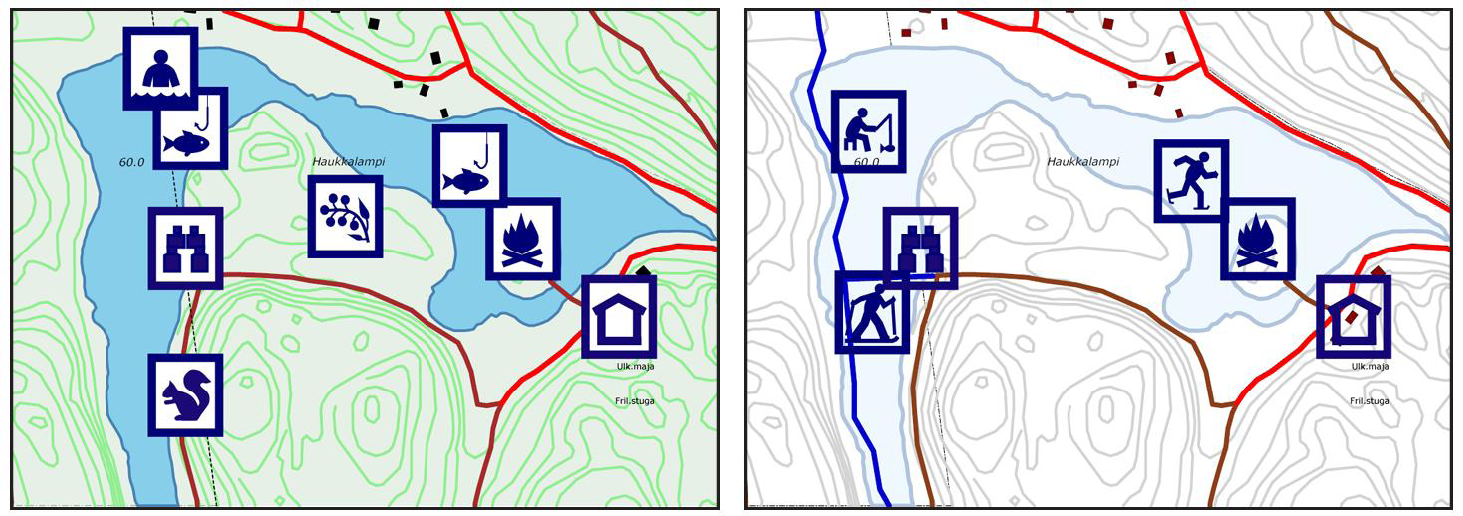1.3.2. Dynamic Portrayal
Adaption
Different POIs will be of more or less interest to a user at different times and locations. A goal of LBS map design is to portray information in a way that is most useful to their needs at a given moment. Previously in Lesson LBS Basics Unit3 this was touched on in terms of adaption. There it was illustrated what adaption was and how it related to context. Here we will explore this idea more in relation to how adaption can be related to importance.
Scope
In the last unit we considered the different types of relevance: activity, spatial, temporal, and thematic. At a given moment of time each of these will have a different range over which they are relevant. This range is called the scope (Edwardes et al. 2003). The simplist example of this might be the distance a POI is from the user.
Spatial Scope
The spatial scope describes the relevance to where you are. The scope can be modelled in different ways. The simplest is based on the geometric distance from a users location. More complex methods involve considering what the area visible to a user at a particular moment (this is important in applications such as tour guides), the space over which their activities will take place (e.g. a route they will drive along), or a distance that also takes into account where their behaviour and the direction they are headed, if they are moving. Spatial scopes can also relate directly to a place or region where the user is located. For example, "at the office" or "downtown".

Temporal scope
The temporal scope describes when information is relevant. The most obvious range is the time of day, for example the opening hours of a shop. The day of the week is often also important. For example museums are usually closed on mondays. The season of the year will also define a relevant interval. For example in an alpine recreation area skiing might take place in winter and hiking in summer. Some types of information will have an age. In an LBS describing animal observations, the observation will have taken place at some time in the past and the age will be important.
 |
| (Nivala et al. 2005) use the season to adapt the contents of a map of a natural recreational area. |
Activity Scope
The scope of an activity relates to the resources and places that are relevant to the tasks involved in performing it. For example, in an LBS for car navigation resources might include petrol stations and rest areas, and places include junctions where navigation decisions must be made. The scope of an activity changes depending on the current task of a user. For example when planning a journey the start, destination and major intermediate landmarks are the most important, whereas when actually driving the junctions and turning actions that need to be performed there are more relevant.
Thematic scope
The thematic scope relates to the identity and personal preferences of the user. As such it can be quite broad. Important types are the user's age, their social situation and personal preferences. A thematic scope based on age for instance might filter bars and nightclubs from very young people. A social scope might filter out people not known to a user in a friend finder application. Thematic scopes including personal preferences might cover aspects such as the types of ATM they can use, how expensive a service of interest is, or their likes and dislikes (e.g. never showing fast-food restaurants).
